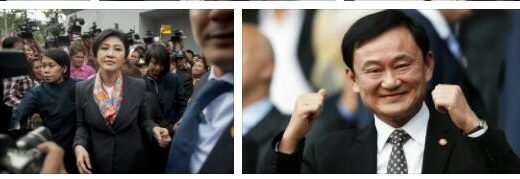Thailand Social Structure
Macrosocial structure
The macro-social structure of Thailand has changed significantly due to the economic development. The picture of a traditional society, in which most of the people live in the country and in feudal patron-client relationships, is no longer correct. In 2016, of almost 39 million people in employment, only just under 13 million worked in the primary sector, while 25 million were employed in the manufacturing and service sectors. In addition, many people working in agriculture and the fishing sector are not small farmers or fishermen, but also wage earners (mostly migrants). So there are two new large groups in society – a middle class and a working class- originated. There was also fundamental change within the ruling elite. Whereas the military and 5-6 families who dominated the rice trade and banking used to set the tone in business and politics, globalization has created new – very rich and politically influential – business groups (e.g. the Shinawatra family).
Although economic development has generated a lot of wealth, workers only earn between 5-10,000 Baht (125-250 euros) a month. The UN states that there is “persistent inequality”: the top fifth of the population had 55% of the income in 2008, the bottom fifth just 4%. Thailand is now officially the country with the greatest inequality in the world. According to a report by Credit Suisse, the richest 1 percent of the population controls 67% of wealth in 2018, almost 10 percent more than in 2016. 70% of Thais own only 5% of the country’s wealth. Similar inequalities exist in terms of gender relations. Although there are relatively many women in management positions (the best example is the ousted Prime Minister Yingluck Shinawatra), women in Thailand are structurally disadvantaged. A very poor result in the Gender Inequality Index (0.377, 77th out of 159) is due, for example, to a low proportion of members of parliament (6% after the military coup) and significantly fewer women with higher education than men. In addition to social and gender-specific inequalities, there are regional differences. It is mainly young women from the poorer north and northeast of Thailand who are attracted to the prostitution industry with the prospect of better earning opportunities.
Thai society is characterized by an unequal legal status along ethnic lines. The so-called “Hilltribes” were marginalized for years and excluded from Thai citizenship. The Malay minority in the south of the country, for example, was not allowed to teach their own language in schools for decades and is subject to blanket repression by the state due to separatist violence. Burmese migrants are even worse off who, as low-wage earners, ensure the profitability of the textile sector and the fish processing industry. In 2014, investigative research uncovered “modern slavery” practices on fishing boats that also supply German companies with shrimp.
Microsocial structure
Social change does not stop at the micro-social structure. The formerly dominant extended family was a socio-economic unit, the basis of which is now being destroyed. With the decline in smallholder agriculture, the increase in wage labor, the entry of women into working life and work-related migration, fewer and fewer people from the younger generation are living with their parents. Although respect for and care for parents and extended families is still important for cultural reasons, the nuclear family is increasingly becoming the norm in everyday life. At the same time, the divorce rate is also growing which reached 41% in 2017. Life plans are becoming more diverse and mobile. The changes in the Thai village are just as fundamental. It is still glorified as a traditional unit, but at the same time also seen as a place embedded in globalization processes and inhabited by “political farmers”. The strong hierarchization of Thai society, usually portrayed as a cultural peculiarity of the Thais, is increasingly being called into question.
Military against monks
In February 2017 there was a week-long siege of Wat Dhammakaya temple by police and military. Superficially, it was about the arrest of the head of the temple, Phra Dhammajayo, who is wanted for corruption and who is said to have been hiding on the premises. In the background, however, there is a prolonged dispute about centralizing and purifying the Buddhist Sangha. The Dhammakaya Movementis one of the most influential Buddhist sects in Thailand, holding mass events at its headquarters with hundreds of thousands of participants. She is extremely well connected and she is said to have connections to the deposed Prime Minister Thaksin Shinawatra. After the death of the last patriarch of the Sangha, Phra Somdet Yanasangwon, Phra Somdej Maha Ratcha Mungkalajarn was initially proposed by the Sangharat as the senior monk for the position. But because he had close ties to Dhammakaya, the military junta blocked his appointment. Sangha law has recently been changed so that the king, not the sangharat, appoints the patriarch. Now King Vajiralongkorn has a convenient abbot,Phra Somdej Maha Muneewong, appointed Sangha Raja. Critics see the prosecution of Phra Dhammajayo as an attempt to break the influence of Dhammakayabewegung and the Sangha to the ideological requirements of the military regime and the monarchy realign. The “National Legislative Assembly” set up by the military unanimously passed a new “Monks Law” in 2018, restoring the power to the king to appoint or dismiss monks from the Sangha Assembly. This is a return to the period of absolutist rule before the Sangha was democratized.



